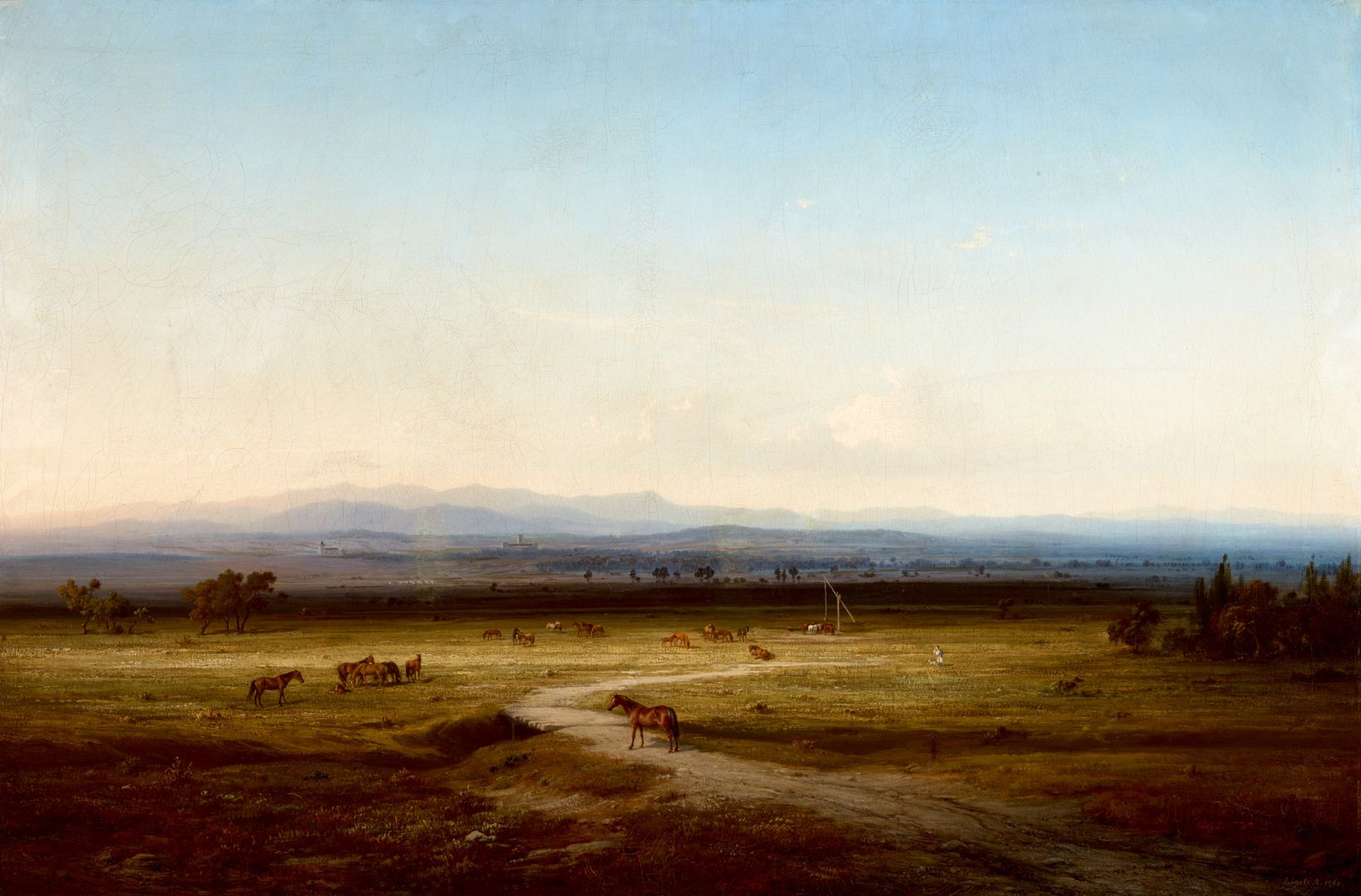Hall 2
Landscape with a Herd of Horses
LIGETI, ANTAL (1823–1890)
Landscape with a Herd of Horses, 1868
oil on canvas, 101x150 cm; marking at the bottom right: Ligeti A. 1868.
Fine Arts Collection, Inv. No.: 63.38.
Similar to other painters whose artworks are featured in the gallery, such as Mihály Szemlér and Miklós Izsó, the experiences of the Hungarian Revolution and War of Independence of 1848–1849 as well as the topic of national identity were major influences on the career of the Upper Hungary-born artist. The general atmosphere of the period led to the birth of a new genre in the form of historical landscape art, with Antal Ligeti being one of its finest representatives. Out of his works, the landscapes painted during 1867–1870 for the Chamber (present day reading room) of the Hungarian Academy of Sciences stand out by their purpose alone. These paintings depicting the castles of Szigliget, Hricsó, Trencsén and Szepes in idealized landscapes can be found in their original location to this day.
The identity of the original commissioner of the painting held at Miskolc and its subsequent owners are currently unknown. It was handed over to the museum in heavily damaged condition by the Ministerial Office for Endangered Private Collections in 1949. The landscape is unidentified, it is possible that it does not depict a specific location, representing an idealized location characteristic of the Hungarian countryside.
Despite the fine details, this enormous tableau still makes for a coherent work of art. The slightly elevated point of view allows the artist to depict a wider panorama. We can see a lowland landscape in the shadowed foreground with several characteristic features, such as horses and a well pole. Following the trail of the road crossing through the sunlit meadow, the attention of the viewer is directed to the misty hills in the centre of the composition, revealing a small church and a fortified building which hints at a settlement. Last, the horizon is wreathed by the mist-cloaked mountains of the Carpathians, with the other half of this layered image being dominated by the sky with diffused lighting.
The painting captivates the viewer by its totality. The depiction of a broad panorama two decades after the failed revolution symbolized the nation’s internal independence to the contemporary audience. Today, it still manages to impress viewers with its sense of boundless freedom.
Based on the description of Gertrud Goda
(In: A Herman Ottó Múzeum Képtára. Edited by: Andrea Pirint. Miskolc, 2004. 36. Cat. No.: 27.)
